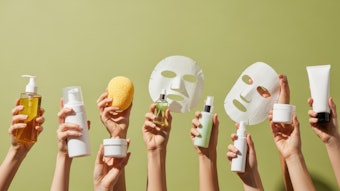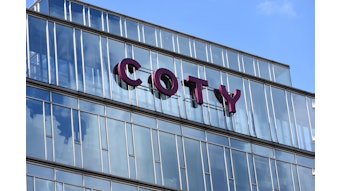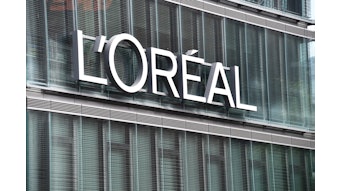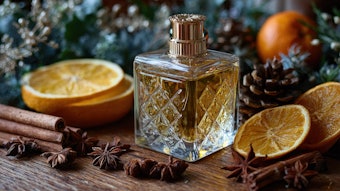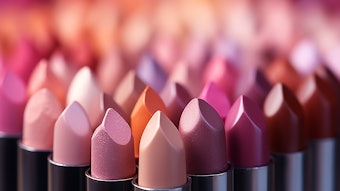- For the Hispanic beauty consumer, outer beauty is a reflection of the respect you have for yourself and those around you, as well as a reflection of who you are.
- Hispanics are projected to comprise 22% of the U.S. population within the next 15 years.
- Latinas are generally more attuned to advertising for beauty products across virtually all media types.
- Latinas are open to person-to-person recommendations from friends, family and others.
- Brands can increase their bond with Latinos by running campaigns across English-language and Spanish-language media.
- The Hispanic woman isn’t willing to save a few pennies by buying a bargain brand when it comes to her appearance.
“You’re not going to the grocery store without your makeup on, are you?”
“Your father is going to be home in an hour—and I haven’t even done my hair or makeup!”
These phrases may seem out of place or too traditional for much of today’s culture, but they still resonate and stand true for one of the most rapidly growing demographics in the United States, the Hispanic woman.
A recent Nielsen report notes that “Hispanic women over-index ... versus total households in terms of cosmetics consumption.” The report adds, “Hispanics are more likely to spend on hair care products than the general market, and they account for 16% of the total U.S. sales to this category. They also drive 14% of overall fragrances sales and 13% of cosmetics sales, the top two beauty care categories for Hispanic shopper spending.”
Today, the beauty and cosmetic industry has considerable opportunity to better serve one of the most engaged and invested consumer segments.
Growing Population Driven by Tradition
Today’s young Hispanic women grow up in an environment where it is very important to be well-groomed and put-together at all times, and for all occasions. They are to never be without makeup and feel compelled to be as beautiful as they can when they leave the house to run errands, as well as when they greet their spouse or significant other.
“Natural” is not okay. Ever. Outer beauty is a reflection of who you are—it’s your way of showing the world that you care about yourself, that you have respect for those around you and that you have it all together. Essentially, outer beauty is a reflection of inner beauty. It’s as simple as “Mother said so.”
There is no denying that the Hispanic woman plays a vital part to the beauty industry today, and will continue to be a driving force into the future. The percentage of Americans who are of Hispanic descent continues to grow at six times the rate of non-Hispanics, and Hispanics are projected to comprise 22% of the U.S. population within the next 15 years.
Considering both the growing demographic and its sentiments and attitudes towards beauty, it’s worthwhile for major beauty brands to look underneath the surface statistics to illuminate how to best market to today’s Latina consumer.
The vast majority of Latinos residing in the United States today live in a world that has one foot in the past and one in the present: on one hand, the traditional habits and views with which they grew up and still experience with their family, and on the other the world of friends, co-workers and other contemporaries. While marketers tend to classify members of this population as falling into one of three segments—unacculturated, bicultural or acculturated—the typical Hispanic woman embodies different acculturation levels in her approach to different aspects of her life.
The emblematic Hispanic woman, like the majority of women, strives to look beautiful and uses beauty products regularly to help her attain a desired look. However, unlike other segments, what makes beauty products even more important to the Latina consumer is the little voice in her head—Mom reminding her that her outer beauty is a reflection of her inner beauty.
Hispanic Consumer Influencers
As she heads out into the world, the young Hispanic woman has many role models. Many of the beautiful and famous women that she aspires to look and be like, such as Jennifer Lopez and Sofia Vergara, are Latinas, but non-Hispanic women, like Beyonce, also factor in. What all of these women have in common is their glamour and sexiness.
While a young non-Hispanic woman may rebel and want a sexier look that Mom would not approve of, the young Hispanic woman is unlikely to have any desire to push the envelope to, say, a Katy Perry or Miley Cyrus look. What does all this mean for the beauty brands targeting this important and growing demographic?
Compared to non-Hispanic women, Latinas are generally more attuned to advertising for beauty products across virtually all media types. This is true for both Millennial Latinas and their older generation X and baby boomer counterparts.
Latinas tend to be information seekers, using both traditional ads and online social media channels to learn about new products and trends. Across product categories, Latina consumers are more likely than non-Latina consumers to actually engage with the ads to which they are exposed. Further, Latinas are more likely to remember what brand was being advertised, and are even more likely to be persuaded by the claims made in the ads they have seen.
Being highly social, Latinas also are open to person-to-person recommendations, from friends, family and others. For example, the strength of Avon brands among Latinas speaks to the social dynamic and the willingness to adopt brands that are recommended, and even sold, by one’s friends and family. As for brands that are sold through more traditional retail channels, the in-store salesperson can be a highly persuasive individual.
Connecting with Latinas
From a media standpoint, with the exception of the least acculturated Hispanic women (who tend to be older), today’s Latina is highly engaged with broad-based, English-language media platforms. In fact, she’s more likely to see an ad placed on network TV, in an English-language fashion magazine or on an English-language website than she is to see an ad purchased in Spanish-language media venues.
Many brands in traditional product categories such as consumer packaged goods, alcohol/beer and even automotive, find that they can increase their bond with Latinos by running campaigns across English-language and Spanish-language media. Savvy advertisers are aware that the typical Latino consumer, acculturated or not, will see their general market ads along with their Spanish-language ads.
Those who understand that their brand positioning should be consistent across the different ads will generally create Spanish-language ads that are not completely separate from the general market campaign, but rather present them with slight nuances that will strengthen affinity with Latino prospects.
When it comes to beauty brands, it may arguably be better to concentrate primarily on broad-based, English-language media venues, unless your brand is specifically designed for and targeted to the Hispanic woman. After all, most of today’s young Hispanic women are not striving to be beautiful to just their Latino friends, but rather to embody a beauty that is widely recognized and admired across ethnic lines.
Some would argue that the importance of the Latino target audience to beauty brands lends itself to a separate campaign to target this segment. However, given the crossover of media engagements, and the universal definitions of beauty that Hispanic and non-Hispanic women alike are seeking to attain, more, rather than less, cohesion is a surer path to success.
Product Mix
Colors and shadings within the product mix have to work for the Hispanic women. Brand names are very important—the Hispanic woman isn’t willing to save a few pennies by buying a bargain brand when it comes to her appearance.
The classic, foundational brands, the ones that have been around for years, hold an important place in the brand repertoire. But so do the newer, cool brands—the ones that weren’t around when Mom was young, but which provide today’s version of glamour. The Hispanic woman is willing to spend what it takes to attain the look she’s after.
Her pursuit and relationship with beauty brands is fueled by both a contemporary interest and a traditional upbringing. Not only does the Latina look to friends and aspirational role models for ideas, advice and inspiration, but she’ll never forget the beauty lessons from her Mom: “outer beauty is a reflection of inner beauty.”


